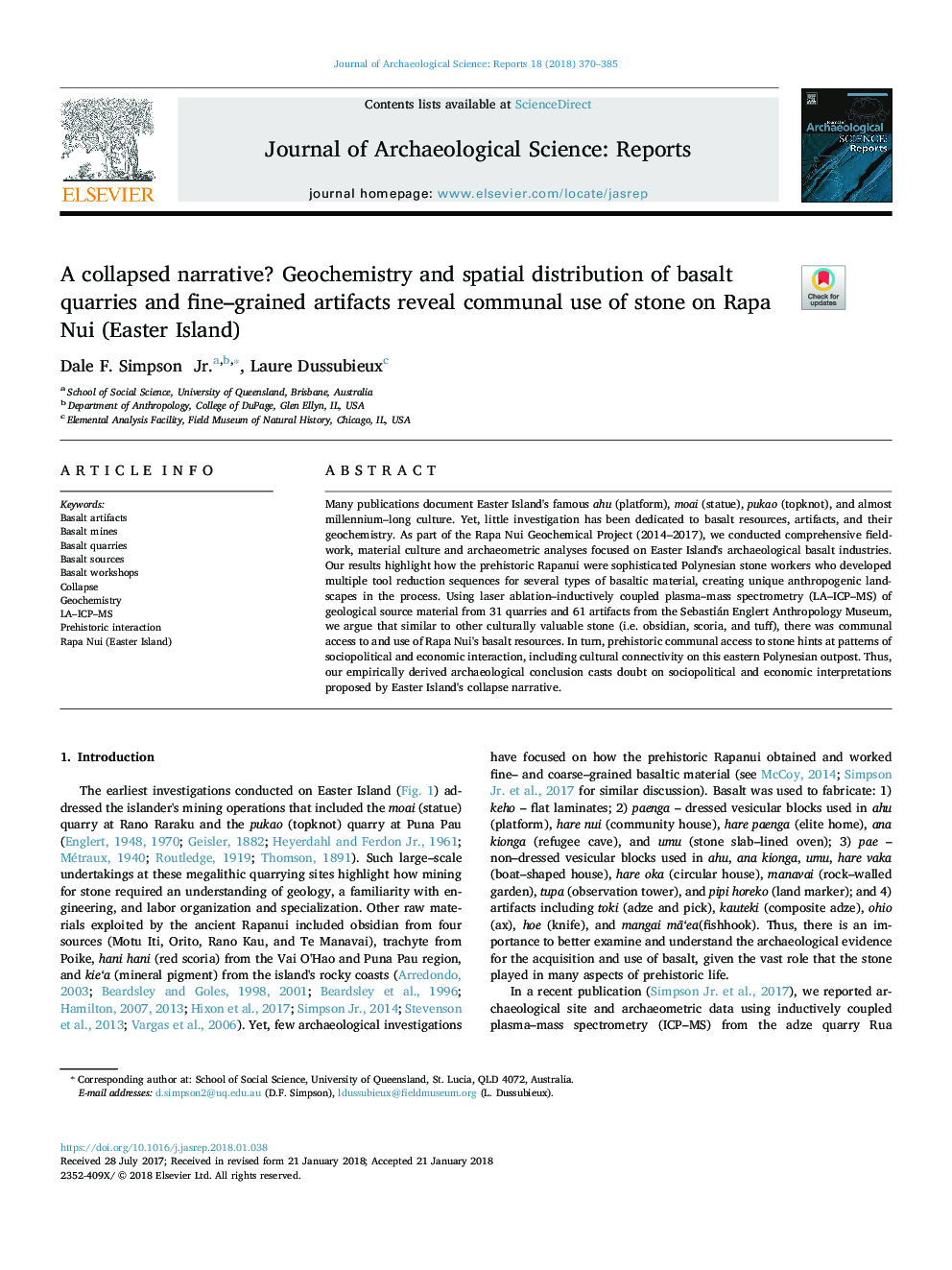| کد مقاله | کد نشریه | سال انتشار | مقاله انگلیسی | نسخه تمام متن |
|---|---|---|---|---|
| 7444969 | 1483925 | 2018 | 16 صفحه PDF | دانلود رایگان |
عنوان انگلیسی مقاله ISI
A collapsed narrative? Geochemistry and spatial distribution of basalt quarries and fine-grained artifacts reveal communal use of stone on Rapa Nui (Easter Island)
ترجمه فارسی عنوان
روایت سقوط کرد؟ ژئوشیمی و توزیع فضایی سنگ معدن بوزالت و مصنوعات ریز نشان دهنده استفاده جمعی از سنگ در رپا نیوی (جزیره عید پاک)
دانلود مقاله + سفارش ترجمه
دانلود مقاله ISI انگلیسی
رایگان برای ایرانیان
موضوعات مرتبط
علوم انسانی و اجتماعی
علوم انسانی و هنر
تاریخ
چکیده انگلیسی
Many publications document Easter Island's famous ahu (platform), moai (statue), pukao (topknot), and almost millennium-long culture. Yet, little investigation has been dedicated to basalt resources, artifacts, and their geochemistry. As part of the Rapa Nui Geochemical Project (2014-2017), we conducted comprehensive fieldwork, material culture and archaeometric analyses focused on Easter Island's archaeological basalt industries. Our results highlight how the prehistoric Rapanui were sophisticated Polynesian stone workers who developed multiple tool reduction sequences for several types of basaltic material, creating unique anthropogenic landscapes in the process. Using laser ablation-inductively coupled plasma-mass spectrometry (LA-ICP-MS) of geological source material from 31 quarries and 61 artifacts from the Sebastián Englert Anthropology Museum, we argue that similar to other culturally valuable stone (i.e. obsidian, scoria, and tuff), there was communal access to and use of Rapa Nui's basalt resources. In turn, prehistoric communal access to stone hints at patterns of sociopolitical and economic interaction, including cultural connectivity on this eastern Polynesian outpost. Thus, our empirically derived archaeological conclusion casts doubt on sociopolitical and economic interpretations proposed by Easter Island's collapse narrative.
ناشر
Database: Elsevier - ScienceDirect (ساینس دایرکت)
Journal: Journal of Archaeological Science: Reports - Volume 18, April 2018, Pages 370-385
Journal: Journal of Archaeological Science: Reports - Volume 18, April 2018, Pages 370-385
نویسندگان
Dale F. Jr., Laure Dussubieux,
